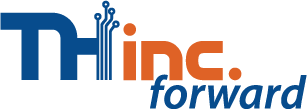
Unlock Success: 5 Proven Strategies for Seamless Tech Implementation
Unlock Success: 5 Proven Strategies for Seamless Tech Implementation
Master the art of integrating new technology to drive growth and efficiency in your organization.
Implementing new technology in an organization can be challenging, but when done correctly, it can yield significant benefits—boosting efficiency, driving growth, and reducing costs. To unlock these advantages, meticulous planning, effective communication, and seamless execution are critical. Here are five essential strategies to ensure your next tech implementation drives the business outcomes you need.

Comprehensive Assessment and Strategic Planning
Before embarking on a tech implementation, it’s essential to conduct a thorough assessment and develop a detailed plan. This should include:
- Needs Analysis: Identify the specific business challenges and objectives the new technology will address. Engage stakeholders across departments to gather diverse perspectives and define the desired future state and the benefits to be realized.
- Technical Capability Assessment: Define the key technical and financial parameters of the project. Ensure your organization has the necessary resources, including budget, time, and personnel, to support the implementation. For a series of multiple implementations, plan the frequency to streamline quickly and maintain momentum without overwhelming the organization.
- Risk Management: Identify potential risks and develop mitigation strategies, including contingency plans to ensure a smooth go-live, while assessing the impact on existing systems and processes.
A well-structured plan acts as a roadmap, guiding the implementation process and helping to avoid common pitfalls.

Stakeholder Engagement and Transparent Communication
The success of a tech implementation heavily relies on the involvement and support of all stakeholders. To achieve this:
- Defined Teams: Clearly define roles and responsibilities using frameworks like the RACI matrix to ensure accountability throughout the implementation.
- Clear Communication: Keep stakeholders informed about the project’s goals, timelines, and progress. Establish core communication channels, whether through meetings, emails, or collaboration tools.
- Feedback Mechanisms: Create channels for the team to provide feedback and address challenges and concerns promptly. This helps the implementation team to adapt plans as needed and ensures smoother execution.
- Tailored Training Programs: Provide comprehensive, role-specific training to ensure all users are comfortable with the new technology.
Early feedback and ongoing communication foster stakeholder buy-in and minimize resistance to change.

Incremental Implementation and Pilot Testing
Phased implementation of new technology can significantly reduce risks. This strategy includes:
- Pilot Testing: Begin with a small-scale pilot to test the technology in a controlled environment, allowing the team to identify and resolve issues before a full-scale rollout.
- Incremental Rollout: Gradually introduce the technology across the organization, gathering feedback and making adjustments as necessary.
- Monitoring and Evaluation: Continuously monitor the implementation process using key performance indicators (KPIs) to measure success and identify areas for improvement.
An incremental approach minimizes disruptions and allows for smoother technology integration.

Seamless Integration with Existing Systems
Ensuring the new technology integrates smoothly with existing systems is crucial for successful implementation. Key steps include:
- Compatibility Assessment: Identify key systems and infrastructure that the new technology must integrate with, and evaluate for compatibility, highlighting any potential conflicts or dependencies.
- Data Migration: Carefully plan and execute data migration to ensure data integrity and minimize downtime. This may involve cleaning and transforming data to meet the new system’s requirements.
- API and Middleware Solutions: Utilize APIs and middleware to facilitate integration between the new technology and existing systems, streamlining processes and improving data flow.
Effective integration ensures that the new technology enhances rather than disrupts existing operations.

Ongoing Support and Continuous Improvement
Tech implementation does not end with deployment; ongoing support and continuous improvement are essential for long-term success. This involves:
- Post-Implementation Support: Provide robust support to address issues that arise post-implementation, including a dedicated support team and clear escalation procedures.
- Regular Updates and Maintenance: Keep the technology up to date with regular updates and maintenance to ensure optimal performance and security.
- Continuous Improvement: Foster a culture of continuous improvement by gathering user feedback, monitoring performance, and making iterative enhancements to the technology.
Ongoing support and a commitment to continuous improvement ensure the technology continues to deliver value over time.
Successful tech implementation can transform an organization, driving efficiency, growth, and profitability. By following these five essential strategies, your organization can achieve its desired outcomes. For expert guidance, consider partnering with Thinc Forward. With three decades of implementation experience, Thinc Forward expedites timelines and transitions by streamlining environment readiness and employing a proven process led by seasoned professionals. We also provide ongoing support to ensure long-term success and peace of mind.
Ready to see if your organization can achieve the benefits of a seamless tech implementation? Contact us today for a Free Technology Assessment. Our experts will evaluate your current systems and identify opportunities to drive growth, efficiency, and cost savings through strategic technology integration.











